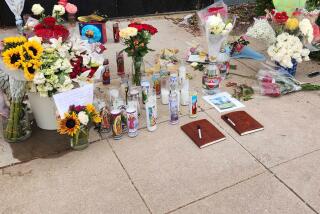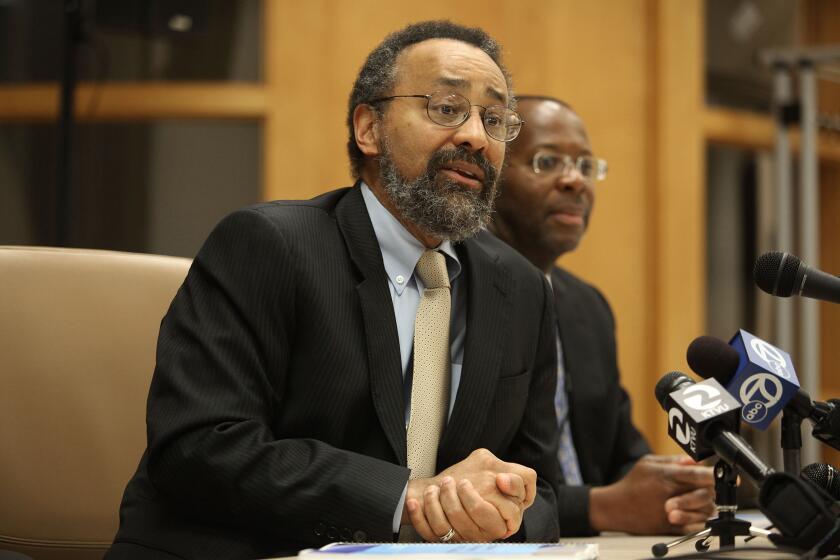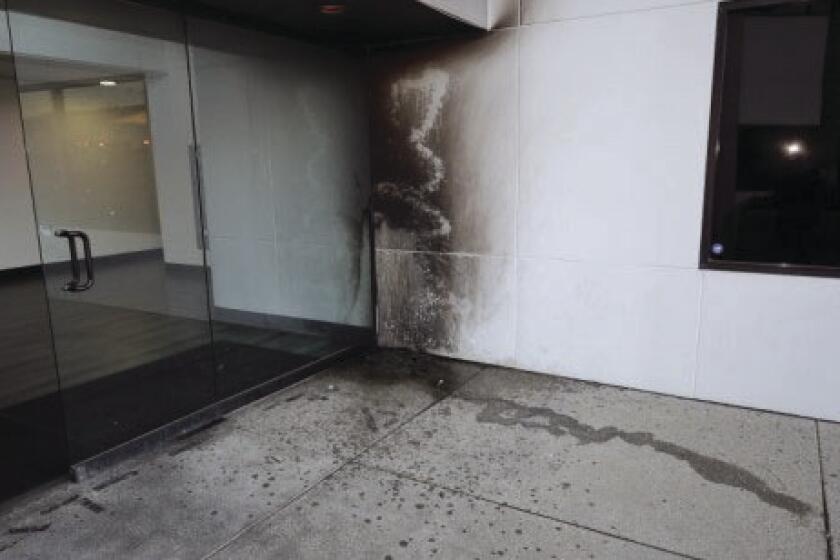Give Kids an Option Besides Gang Life
The epidemic of gang-related violence that has resulted in the deaths of more than 50 people in Los Angeles since the beginning of the year is shocking.
Prepare for further shocks.
In South-Central Los Angeles, Washington, D.C. and other communities, armed warfare is becoming a common response to the irritations of daily life--business deals gone awry, arguments with family members, envy over a neighbor’s new leather jacket or designer sunglasses.
From 1984 to 1986, the rate of violence among youth rose 9% nationwide, a reversal of the decline of the past decade. To date, we have attempted to quell this upsurge with police crackdowns. But while police action may clear the streets for a few days, gang members brag that they easily adapt their operations and continue as before. It is obvious that law enforcement, while essential, is not the answer to youth violence. If we want to stop children from killing each other, we must address a much tougher underlying issue--the neighborhoods they call home.
It comes as no surprise that the highest incidence of crime occurs in communities where the supporting structures of school, job and family have come undone. Children growing up in our poorest neighborhoods are far more likely to fare poorly in school, become teen-age mothers, suffer chronic unemployment, and resort to crime and violence. They grow up with little investment in their future, and little evidence from their bleak environment that thefuture is something worth investing in. When they pull a gun and risk a jail term, they have little risk that their future isat stake.
In the past we have looked on the children of the underclass as an unfortunate anomaly within the nation’s overall prosperity. That is no longer true. Today, 25% of all children under age 6 live in households in poverty. If we neglect them for their entire childhood, as we too often did their older brothers and sisters, we do so at their, and our, peril.
Rebuilding communities fractured by decades of neglect will not be easy. We must start at the most basic level, and give community institutions sustained, coherent support if they are to counteract the power of drug gangs. One of the most important components is the role that parents play. Fortunately, we know what needs to be done. Researchers testifying before the House Select Committee on Children, Youth and Families have repeatedly given us hard facts that demonstrate which programs--public and private--effectively help children become successful, law-abiding adults:
--Set up local family resource centers. Parents at risk of abusing their children or whose youngsters are involved with drugs can turn to centers for professional advice on child-rearing. In Washington, New York and Hartford, programs link distressed families with volunteer “parent mentors” from churches who provide practical help with family problems.
--Keep children in school. Preschool programs have proven highly effective inguaranteeing graduation from high school, yet only 20% of the children eligible for Head Start classes can attend them. We also need to improve services to children with learning disabilities and handicaps, and link students at risk of dropping out with counselors or other caring adults.
--Promote jobs in impoverished communities. We need to encourage employers to return to these areas, through tax incentives and economic development programs, as well as business-community partnerships. In Boston, the business community agreed to hire local high school graduates and provide support to teachers if the schools enforced standards of attendance and behavior.
--Augment teen pregnancy prevention programs, and fund in-school day-care and job-training programs, such as the New Futures program in Albuquerque for the 400,000 teen-agers who give birth each year.
--Provide drug treatment to every child and parent who needs it. The National Institute on Drug Abuse estimates that 6.5 million people suffer impairment due to drug use, yet fewer than 250,000 receive treatment at any given time. The reason is not lack of interest but lack of treatment capacity. Abusers who seek help must wait months in most major cities.
--Give youths a stake in the future of the community through volunteer service programs. At a Brooklyn church, teens who need tutoring get it, and they in turn tutor younger children--and are paid for their work.
These tasks are so far-reaching that every segment of society must act if we are to succeed: Federal, state and local government, schools, churches, businesses and community organizations--and families themselves. The job will take years, it will cost money, and it will not be glamorous, but it can be done. We must start now.
Regardless of where they live, most youths aren’t violent, and given a choice, they would rather not live in a world of guns, drugs and death. Teen-agers desperately want to belong, to be involved in society and feel that their actions make a difference. By failing to provide the young people of gang-plagued neighborhoods with legitimate outlets for their talents, we are squandering the energy and resourcefulness of their youth. In so doing, we not only deny them the chance to participate in the American dream, we assure that our own dreams will be diminished by the cost of their failure.
More to Read
Start your day right
Sign up for Essential California for news, features and recommendations from the L.A. Times and beyond in your inbox six days a week.
You may occasionally receive promotional content from the Los Angeles Times.






